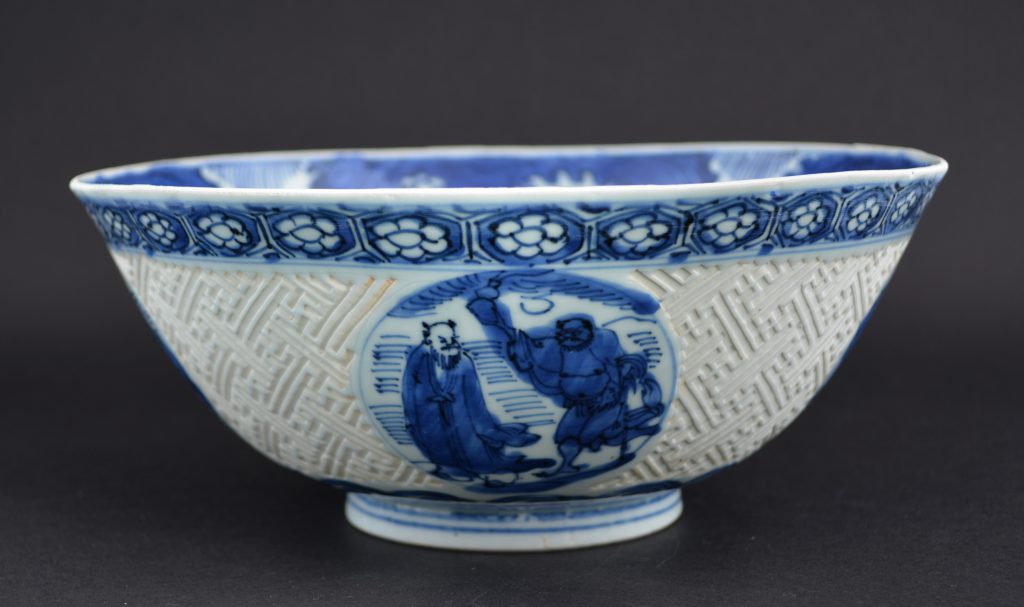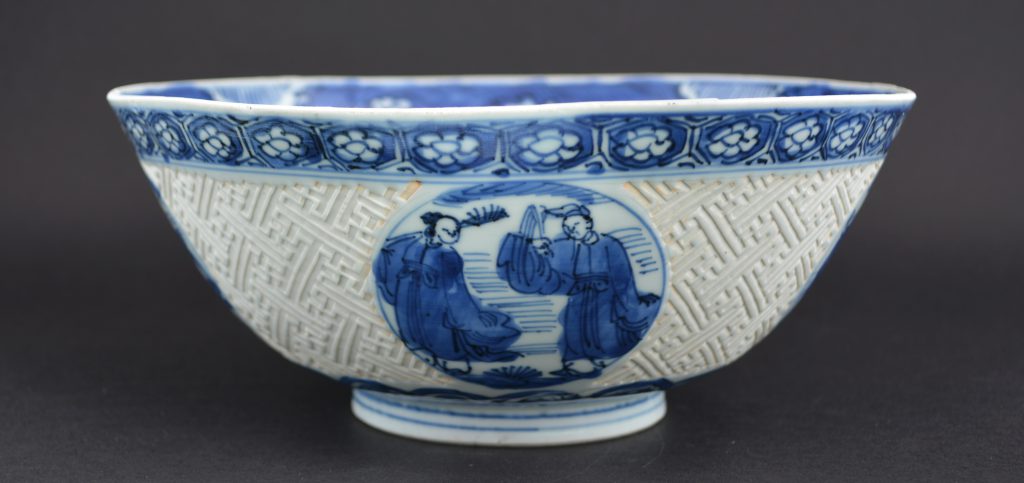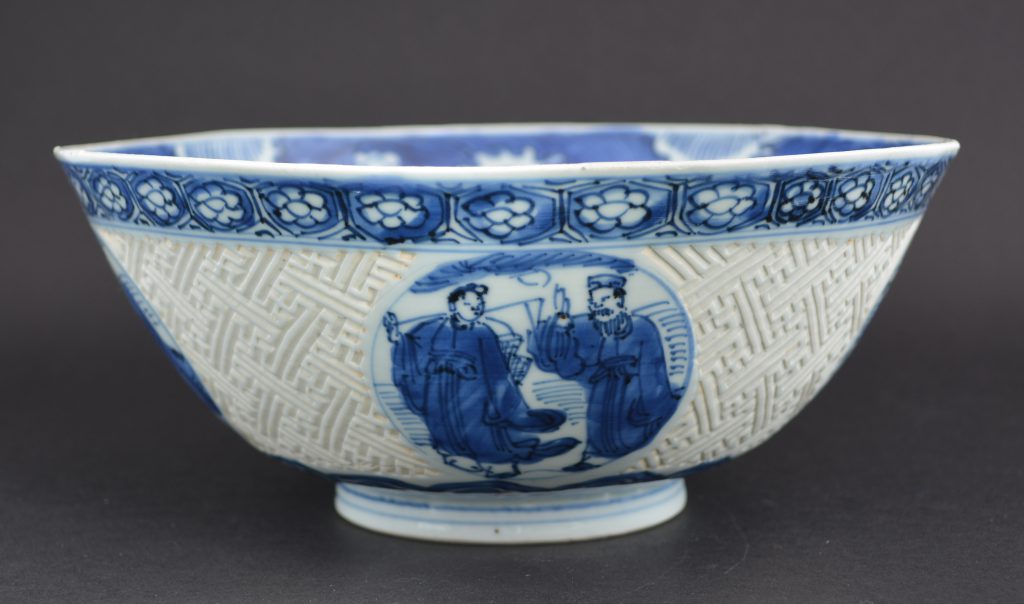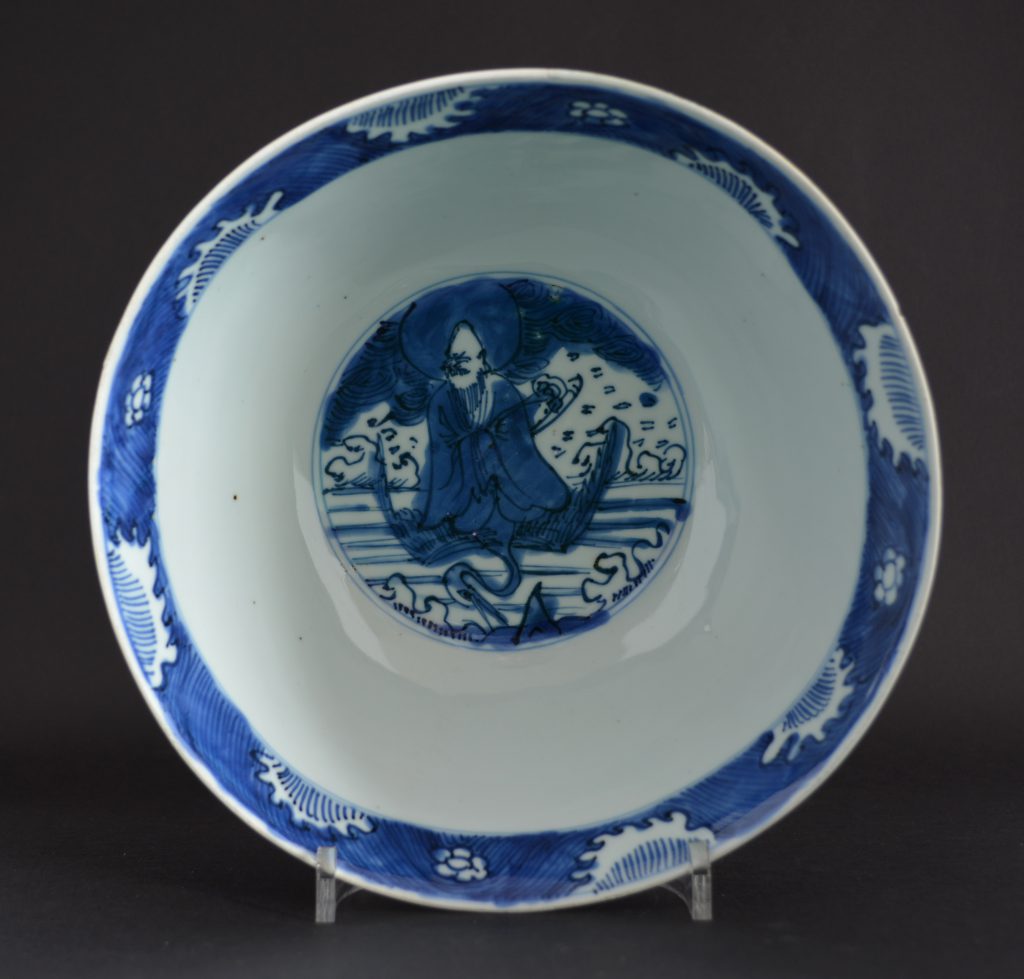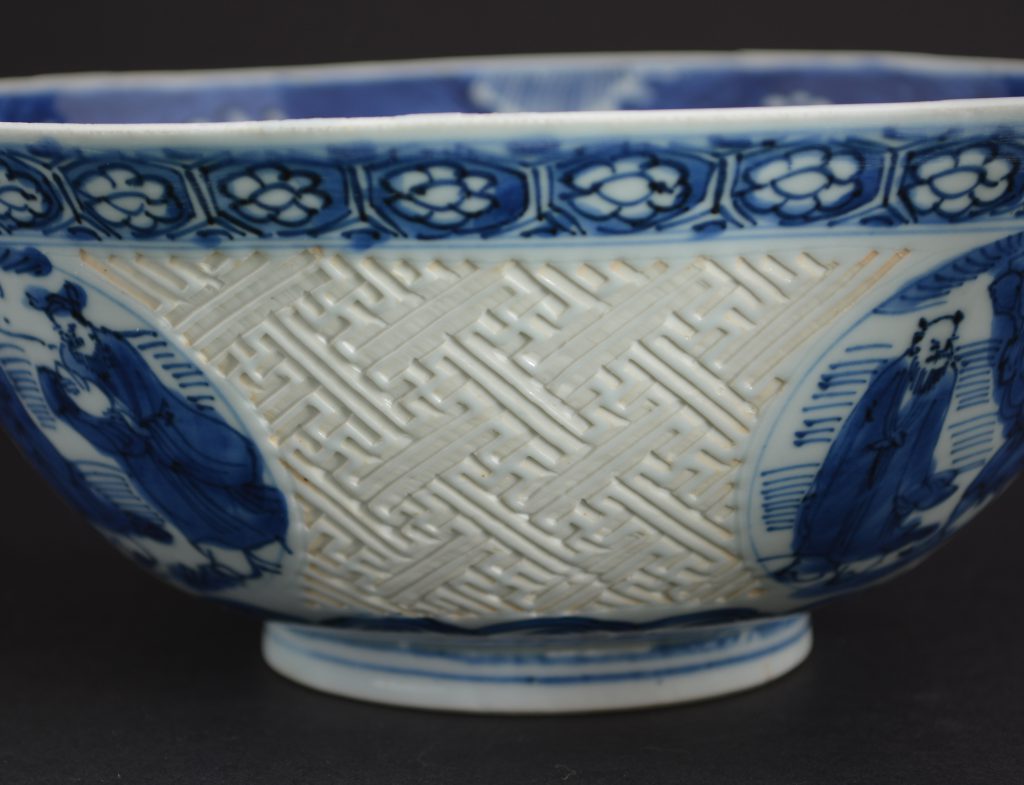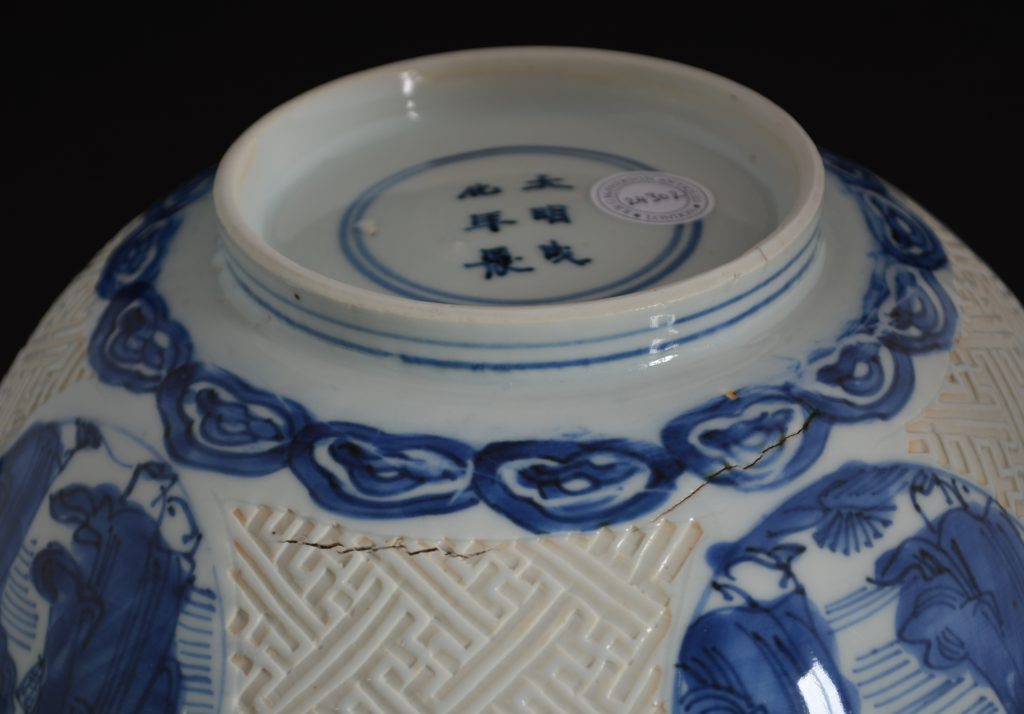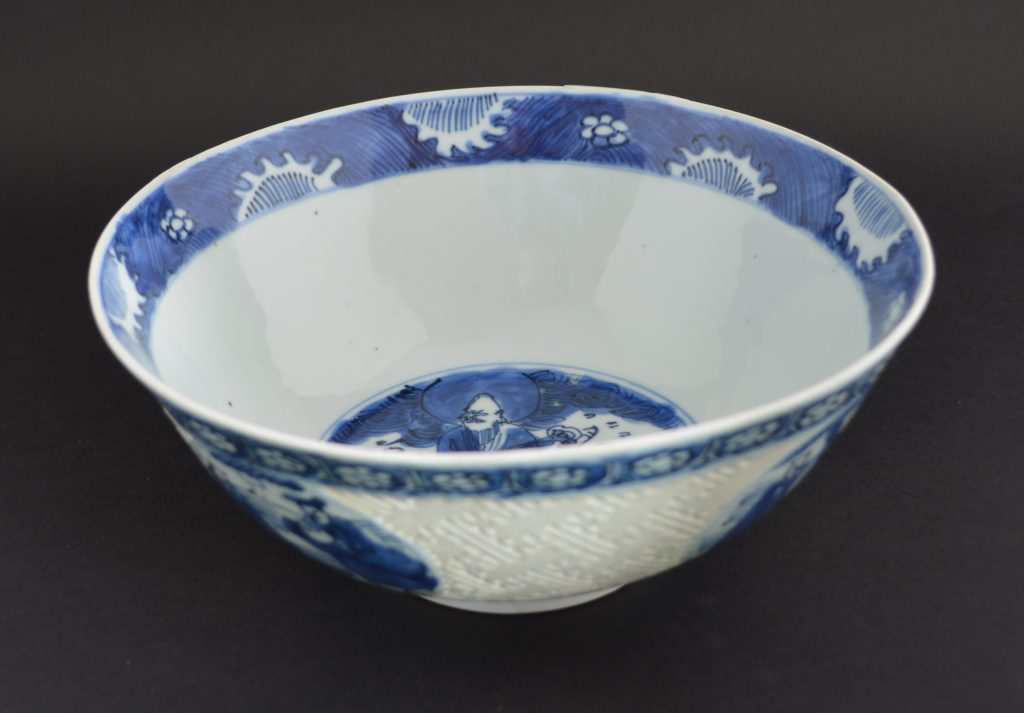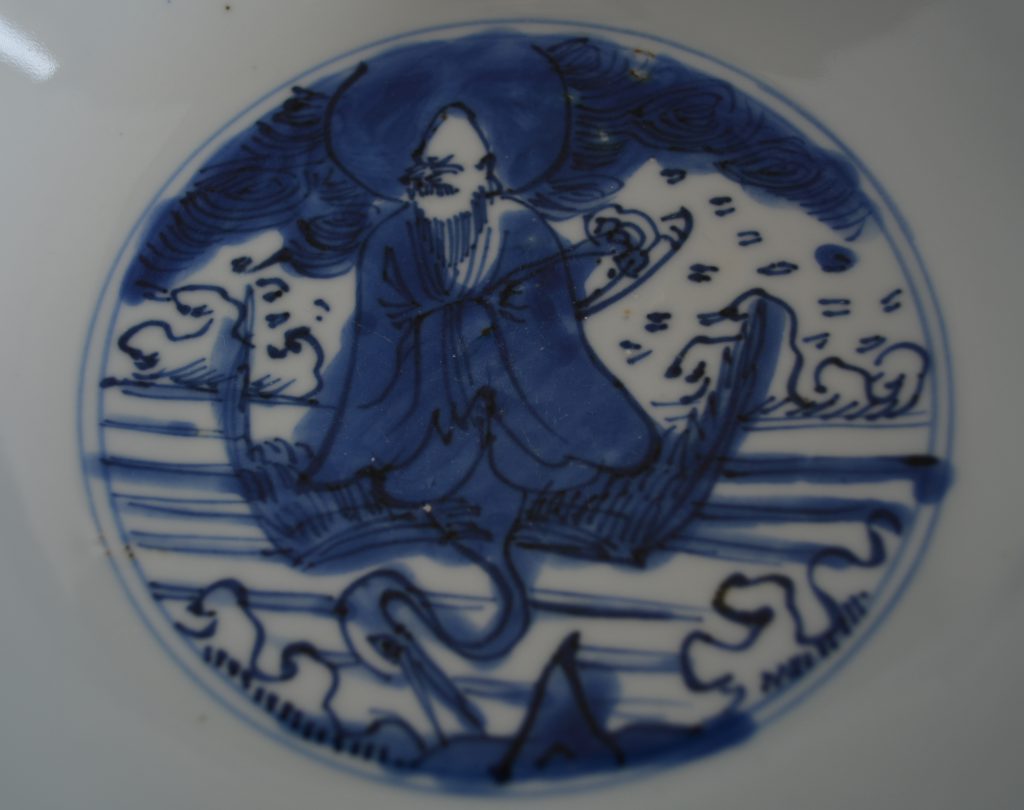
Ming Porcelain Bowl, Wanli or Tianqi c.1600 – 1627.
A Ming Porcelain Bowl Decorated in Blue and White with an Incised Diaper Ground, Late Wanli to Tianqi c.1600-1627. The Well of the Porcelain Bowl is Painted with Shoulao on His Crane Carrying a Ruyi Sceptre. The Exterior has a Ground of Cut Back (Unglazed) Lines Creating a Swastika Diaper Pattern. The Four Panels Each Depict Two Immortals Making up the Eight Immortals.
SOLD
- Condition
- In good condition but with parts of the rim slightly polished. A large firing crack to the lower exterior of the bowl.
- Size
- Diameter : 22 cm (8 1/2 inches)
- Provenance
- Provenance : The Gustav Leonhardt Collection from The Bartolotti House Amsterdam. Gustav Leonhardt (1928-2012) was born in `s-Graveland, North Holland and studied organ and harpsichord from 1947 to 1950 with Eduard Müller at the Schola Cantorum Basiliensis in Basel. In 1950, he made his debut as a harpsichordist in Vienna, where he studied musicology. He was professor of harpsichord at the Academy of Music from 1952 to 1955 and at the Amsterdam Conservatory from 1954. He was also a church organist. Leonhardt performed and conducted a variety of solo, chamber, orchestral, operatic, and choral music from the Renaissance, Baroque and Classical periods. The many composers whose music he recorded as a harpsichordist, organist, clavichordist, fortepianist, chamber musician or conductor. See Wikipedia for more details.
- Stock number
- 24302
- References
- References : For an almost identical Ming Porcelain bowl dated to late Wanli c.1600-1620 see : Late Ming, Chinese Porcelain from the Butler Collections 27 June - 14 September 2008 (Sir Michael Butler, Musee national d`Histoire et d`Art Luxembourg. ISBN 978-2-87985-029-0) page 31. Similar Ming Porcelain bowl but with a painted Shou character ground are illustrated in : The Wanli Shipwreck and It`s Ceramic Cargo (Sten Sjostrand & Sharipah Lok Lok bt. Syed Idrus, Department of Museums Malaysia and Sten Sjostrand 2007. ISBN 967-9935-74-4) page 120, serial number 964. For a larger Ming porcelain bowl with cut back ground dated to Wanli see : An Important Collection of Chinese Ceramics, Christie`s London, 12-13 May 1986 lot 228.
Information
In `Linglong` (Jorge Welsh Books, London, 2004. ISBN 972-99045-2-9) the author states that this "semi-pierced" decoration is seen as a "variation of the openwork carving referred to as Linglong or Guigong (devil`s work). Because the lines are left open and unglazed I think it is quite possible they were intended to be `cold-painted`, however to my knowledge no extant pieces are known but examples of Blanc de Chine porcelain with incised calligraphy are known with colour in the incised lines .
The Eight Immortals :
The Eight Immortals are a group of legendary Xian, immortals or transcendents in Chinese mythology. Each Immortals power can be transferred to a power tool that can give life or destroy evil. Together, these eight tools are called `Covert Eight Immortals`. Most of them are said to have been born in the Tang Dynasty or Song Dynasty. They are revered by the Taoists, and are also a popular element in the secular Chinese culture. They are said to live on Penglai Mountain-Island.
The Eight Immortals are :
Immortal Woman He (He Xiangu),
Royal Uncle Cao (Cao Guojiu),
Iron-Crutch Li (LiTieguai),
Lan Caihe,
Lü Dongbin,
Philosopher Han Xiang (Han Xiang Zi),
Elder Zhang Guo(Zhang Guo Lao),
Zhongli Quan.
